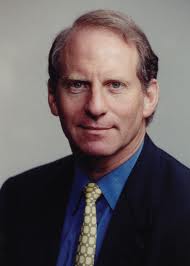 Richard Haass is one of the most well-known foreign policy experts today in the United States about the United States. He has been on the inside including the head of Policy Planning at the State Department. Today he is on the outside – but in a critical position – president of the Council on Foreign Relations (CFR).
Richard Haass is one of the most well-known foreign policy experts today in the United States about the United States. He has been on the inside including the head of Policy Planning at the State Department. Today he is on the outside – but in a critical position – president of the Council on Foreign Relations (CFR).
The title here in this blog post is the title of a just released book by Haass. In the CFR press release the Haass lens on the international system in this new book is described this way:
… Richard Haass describes a twenty-first century in which power is widely diffused, the result of globalization, revolutionary technologies, and power shifts. It is a “nonpolar” world of American primacy but not domination. Haass argues for a new foreign policy doctrine of Restoration, in which the United States limits its engagement in foreign wars and humanitarian interventions and instead focuses on restoring the economic foundations of its power.
Now I’ve not been able to complete the book – that’s coming – but I have gotten a chance to read the CFR enticements, Haass’s own op-eds and the book introduction. But I come away feeling that there is something just not right with this picture, or at least not right given who is presenting the argument.
Haas himself believes that he will be attacked on two fronts. First he believes that he will be condemned as a “defeatist” – as he puts it “… just another apostle of American decline.” He attempts to rebut that critique but does admit that: “Given its considerable endowments and advantages this country is clearly underperforming.”
But criticism will not just come from those who see the Haass options and foreign policy performance as “defeatist”. He also anticipates that he will be attacked with the label “isolationist.” Haass is unwilling to accept this label as well but argues that the domestic situation will, according to Haass, provide this possible situation:
shortcomings here at home directly [will] threaten America’s ability to project power and exert influence overseas, to compete in the global marketplace, to generate the resources needed to promote the full range of US interests abroad, and to set a compelling example that will influence the thinking and behavior of others.
Thus, in the end and at least for this latest version of Haass foreign policy:
The most critical threat facing the United States now and for the foreseeable future is not a rising China, a reckless North Korea, a nuclear Iran, modern terrorism, or climate change. Although all of these constitute potential or actual threats, the biggest challenges facing the US are its burgeoning debt, crumbling infrastructure, second-rate primary and secondary schools, outdated immigration system, and slow economic growth – in short, the domestic foundations of American power.
It just doesn’t ring true in my estimation. Haass divides the book into three parts and the last, and I suspect the foundation for his restoration thesis and the admittedly most prescriptive part of the book, is the last part where he focuses on the domestic challenges: budget, energy, education, infrastructure and immigration.
It is possible – but I have to say somewhat difficult to swallow in the end. And honestly I think Haass has turned the foreign policy threat equation on its head – I would think he should be writing on just those things he identifies but declines to identify as the most critical threat, a rising China, a reckless North Korea, a nuclear Iran, modern terrorism and climate change. How can the US handle these pressing threats? Given his foreign policy reputation I am far more likely to dwell on his analysis of these challenges as opposed to his review of internal policy making. It is not that a foreign policy analyst can’t examine these domestic factors but geez I got to believe that a detailed examination of US behavior and diplomacy including the use of force is what I am most likely to give time to when reading Haass.
And beyond what I’d anticipate I look to Haass to examine, Haass hints at one of the most difficult aspects of contemporary US foreign policy arising from his Haass’s admitted acknowledgement that the US is, or is about to enter a nonpolar world. So, Richard Haass how will US foreign policy be able to achieve outcomes that advances US interets but also tackles the challenges of the global economy and stability in international relations. And don’t tell me it is primarily US domestic policy.
Most US politicians today acknowledge the end of US hegemony – but are left bereft in describing US behavior and actions in this new architecture. Look at former US Vice President Al Gore who this weekend in an interview (see the Globe and Mail, Saturday May 4, 2013 Globe Focus, at F3) expressed the following:
But there is absolutely no alternative to US leadership. Maybe over time one will emerge, but it has to be values-based and it has to be connected to economic and political and military power, and the United States has been unique in possessing all those characteristics.
Now I am not trying to turn Richard Haass into Al Gore. But I do think we need to hear more from Haass and others on the shape of US foreign policy in this new potentially more chaotic world.
Image Credit: global.unc.edu

